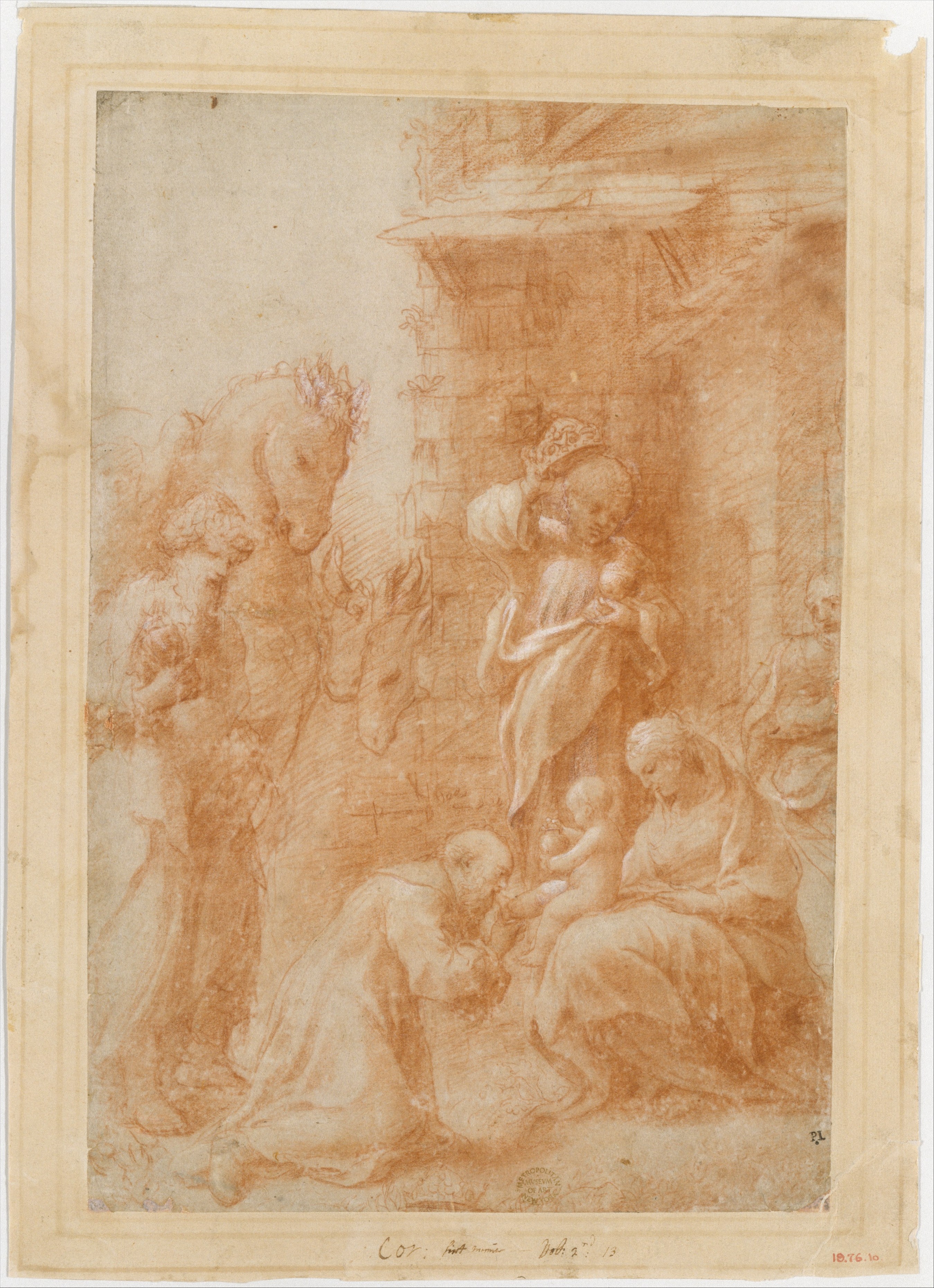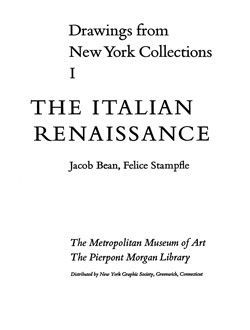The Adoration of the Magi
Correggio (Antonio Allegri) Italian
Not on view
It is possible Correggio produced this drawing as an autonomous work in and of itself, as a proud display of his draftsmanship, rather than as a preparatory study for a painting, given the state of surface elaboration of the design and the degree of completion of the details. Be this as it may, none of the artist's later drawings would exhibit a similarly finished composition.
A. E. Popham first compared the Metropolitan Museum sheet to the motif at left in Correggio's painting of the Adoration of the Magi, of ca. 1517, today in the Pinacoteca di Brera, Milan. The drawing and the Brera painting have been reunited for the first time in their modern history for two exhibitions done in 2008 ('Correggio e l'antico,' Galleria Borghese, Rome) and 2015 ('Il Primato del Disegno,' Pinacoteca di Brera, Milan.) The relatively finished Metropolitan drawing has been cut on the left and right borders. It presents the composition of the Adoration in a relatively tall, vertical solution of the design, in contrast to the arrangement of the subject in the Brera painting, which is in a horizontal format and in which the disposition of the figures is in a mirror orientation. The group of the Virgin with the seated Christ Child on her lap is seen in a profile view in the Metropolitan drawing, and seems more monumental than the relatively frontal design of these figures in the Brera painting. Only about 100 drawings by Correggio are extant, and his early drawings are particularly rare.
The Metropolitan sheet can be dated around 1517-19, because of its relationship to his Brera painting and the monumentality of form of certain figures which anticipates his Camera di San Paolo frescoes of ca. 1519. In particular, the delightfully chubby, Raphaelesque seated Christ Child is quite unlike the holy infant in the Brera painting, who seems instead closer to the type in Mantegna's Trivulzio Madonna (Museo Civico di Castello Sforzesco, Milan). The Child in the Metropolitan sheet resembles the physical types of the cherubs frescoed in the oculi of the later Camera di San Paolo. The figure of the kneeling elderly magus, Casper, kissing the Child's foot at center foreground in the Metropolitan drawing (his appearance is again quite different in the Brera painting) reprises the pose of the kneeling Christ in the young Correggio's painting of Christ Taking Leave of his Mother, of ca. 1515 (National Gallery, London). The Savior's draperies in the London painting also reveal a similar monumentality of form to that of the magus Casper in the Metropolitan drawing.
The early date of the Metropolitan drawing is confirmed by its technique in red chalk (of partly unblended and partly smudged strokes of diagonal parallel-hatching) with soft white gouache highlights. The artist privileged the effects of light and atmosphere. Part of the composition is enveloped in the shadows cast by the architectural structure of the stable at right and these gradually recede to the soft luminosity of daylight toward the left side of the composition that takes place in the outdoors.
Correggio brilliantly exploited the pure, unadorned whiteness of the paper at upper left to evoke the harsh sunlight entering upon the scene. One of the closest stylistic comparisons for this drawing is the sheet in red chalk depicting a Woman Driving a Chariot with Two Horses (Kupferstichkabinett inv. C. 1896-31, Dresden; Muzzi and Di Giampaolo 1988, no. 6). Scholars have repeatedly noted the Northern European influences apparent in both the drawing and the Brera painting, particularly the echoes of Hugo van der Goes in the composition and of Albrecht Dürer in some of the details. The awkwardly drawn horse at left, which resembles that in the artist's Dresden drawing, is also evocative of such animals in Mantegna's paintings, as for example, the horse in the Hampton Court Canvas IX: Julius Caesar on his Chariot (Royal Collection, Great Britain) or the Pegasus of Mercury in the Parnassus (Musée du Louvre, Paris).
Unjustified doubts about Correggio's authorship of the Metropolitan drawing were expressed by Corrado Ricci, who, in his not having studied the sheet in New York in the original, reattributed it to Jacopo Zanguidi "Bertoia" (1544-1574), while Giovanni Godi and Giuseppe Cirillo suggested it was by Giorgio Gandini del Grano (died 1538), one of Correggio's closest followers. Popham, however, rightly advocated Correggio's authorship of the drawing, and subsequent scholars have all accepted this opinion without hesitation (see here Bibliography). The facial types, the pictorial combinations of red chalk with white gouache to create luster and sfumato, the agitated style of the draperies of the standing magus at right which recalls those of Diana in her Chariot in the fresco of the Camera di San Paolo, and the evocation of Mantegna's figures, are all characteristic of Correggio's work in the second decade of the sixteenth century.
(Carmen C. Bambach, 2015)
Due to rights restrictions, this image cannot be enlarged, viewed at full screen, or downloaded.
This artwork is meant to be viewed from right to left. Scroll left to view more.









